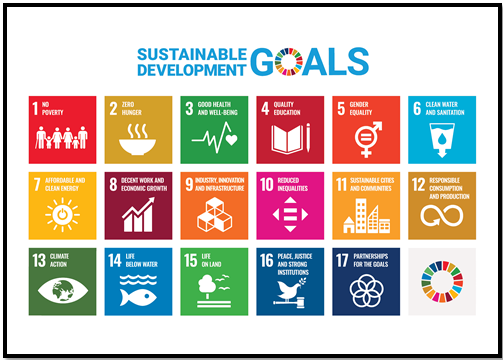“STRATEGIES FOR SUSTAINABLE ECONOMIC GROWTH IN INDIA”
Syllabus:
- GS-3- Sustainable economic growth , policies and implementation ,Challenges and prospective solutions
Focus :
- The article discusses the necessary steps the incoming Indian government should take to ensure rapid economic growth through sustainable and inclusive development. It emphasizes the need to address agricultural employment, boost consumption, improve infrastructure, enhance manufacturing, and leverage technology while focusing on environmental sustainability and legal reforms.
Source - TH
Introduction
- The election results might not align with market expectations, but the incoming government must focus on increasing per capita GDP through inclusive and environmentally sustainable growth.
- The global shift from globalization to protectionism, high-interest rates, and fiscal constraints require strategic planning for sustainable development.
Addressing Disguised Employment in Agriculture
- Challenge: High disguised employment in agriculture.
- Solution: Create more jobs in industry and services to absorb surplus agricultural labor.
- Cost Issues: Industrial power costs and commercial railway freight need subsidies.
- PSU Re-rating: Leverage the increased market capitalization of Public Sector Undertakings (PSUs) for resources through strategic divestments.
- Subsidies: Reduce fiscal constraints by absorbing agricultural power and passenger fare subsidies into the budget.
Boosting Consumption at the Bottom of the Pyramid
- Gold Monetization: Implement schemes to bring idle gold into the economy to boost liquidity and resources.
- Economic Boost: Use additional resources for economic upliftment and increased consumption among the masses.
Enhancing Agricultural Sector
- Cooperatives: Replicate successful models like Amul for other commodities.
- Import Substitution: Focus on reducing imports of agricultural products like palm oil, pulses, and dry fruits by promoting local production.
- Exports: Enhance exports of agricultural and horticultural products.
- Food-for-Oil Trade: Establish bilateral agreements to trade food for oil, securing both food and energy supplies.
Facilitating Free Labour Movement
- FTAs: Negotiate free trade agreements that include long-term work permits for Indian labor.
- Remittances: Increase remittances by providing preferential access to Indian labor in exchange for market access.
Enhancing Skill Development
- Institutional Mechanisms: Establish skill development institutions across India, similar to the plumbing institute in Kendrapara, Odisha.
- Global Workforce: Train workers to meet domestic and global demands.
Expanding Manufacturing Jobs through PLI Schemes
- Export Focus: Promote the export of finished products like garments instead of raw materials.
- Women Employment: Create jobs for women in garment manufacturing.
- Sector Focus: Enhance production in processed agro products, automobiles, auto components, engineering, lab-grown diamonds, jewelry, and shipbuilding.
Supporting Services Sectors
- Integrated Development: Develop tourism, education, and healthcare sectors through coordinated efforts.
- Diaspora Engagement: Encourage the Indian diaspora to promote India as a hub for quality healthcare and education.
Unlocking Domestic Capital
- Frozen Savings: Innovate ways to unlock savings held in real estate, gold, and currencies.
- Domestic Investment: Ensure sufficient domestic capital for entrepreneurs.
| Steps Taken :
1. Pradhan Mantri Awas Yojana (PMAY)
2. Smart Cities Mission
3. Pradhan Mantri Gram Sadak Yojana (PMGSY)
4. Atal Mission for Rejuvenation and Urban Transformation (AMRUT)
5. Bharatmala Pariyojana
6. Sagarmala Project
7. National Infrastructure Pipeline (NIP)
8. Renewable Energy Schemes
9. Make in India
10. Digital India
11. Atmanirbhar Bharat Abhiyan (Self-Reliant India Campaign)
12. National Mission for Sustainable Agriculture (NMSA)
13. Jal Jeevan Mission
|
Strengthening Legal Framework
- Judicial Infrastructure: Invest in improving judicial infrastructure to reduce case pendency and resolve disputes quickly.
- Arbitration Preference: Encourage domestic arbitration to attract more investors.
Enhancing Ease of Doing Business
- Land Acquisition: Simplify land acquisition processes.
- Labour Laws: Reform labor laws to be competitive with other countries.
- Special Economic Zones: Create zones with streamlined processes and one-window clearance for setting up projects.
Investing in Future Technologies
- Public-Private Partnerships: Operationalize funds for investment in future technologies through partnerships.
- AI and Pharma: Establish institutes for artificial intelligence and vertically integrated pharmaceutical research.
Promoting Green Growth
- Renewable Energy: Follow a green growth model while seeking compensation for historical emissions.
- Carbon Credits: Push for carbon credit schemes and emission taxes based on historical contributions.
Responsible Mining Policy
- Local and Industrial Balance: Create policies that balance local interests with industrial needs.
- Coal Reserves: Utilize domestic coal reserves responsibly to reduce imports.
Leveraging Technology in Education and Healthcare
- Public-Private Partnerships: Improve education and healthcare through local accountability and government-private collaborations.
- DBT Education Coupons: Enhance education quality by providing direct benefit transfer (DBT) education coupons.
Encouraging Financial Literacy
- Investor Education: Promote financial literacy to prevent suboptimal savings allocations.
- Financial Awareness: Educate citizens about safe investment practices to avoid scams and high-risk trading.
Conclusion
- The incoming government has a unique opportunity to drive sustainable and inclusive economic growth.
- Strategic planning across various sectors, leveraging technology, and focusing on environmental sustainability will be crucial to achieving this goal.
Source:The Hindu
Associated Article :
https://universalinstitutions.com/indian-economy-growth-and-considerations/
Mains Practice Question :
GS-1
“Discuss the measures that the Indian government should undertake to achieve inclusive and sustainable economic growth. How can these measures address the challenges in agriculture, manufacturing, and technological advancements?”(250 words)




